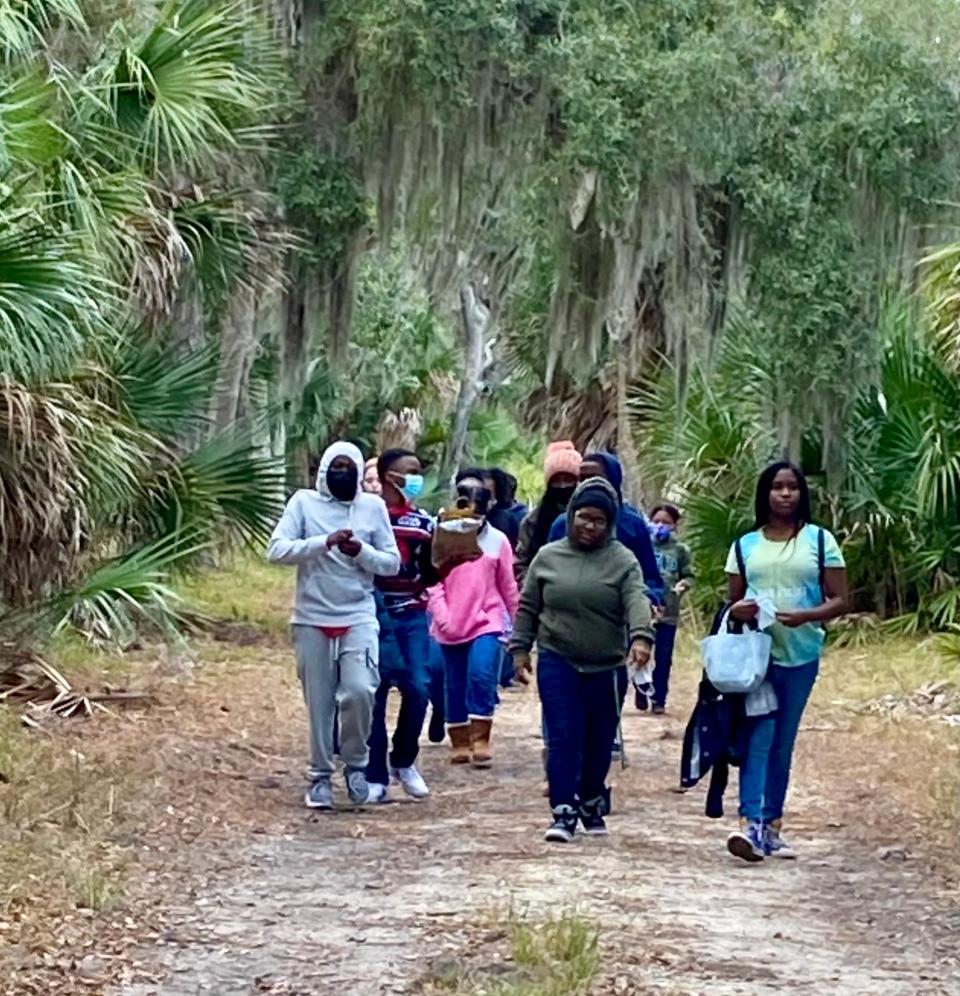Oglethorpe Charter middle school students experience Ossabaw Island as interactive classroom
For Ben Wells, Ossabaw Island was a game-changer. His first time there was during a teacher-training program in 2007. He went back the next year as an instructor for Savannah-area middle schoolers. That’s when he watched one of his most emotionally closed-off students start smiling, laughing and doing funny impressions of his teachers — a sense of happiness, that until that experience on the island, Wells had never seen before.
“I loved Ossabaw the first moment I visited,” recalled Wells. “But I knew when my student started opening up like that, that the island was a special place and an important teacher. It’s transformative, and I wanted to get more students out there to experience that.”

Forty-five minutes by boat and 20 miles from Savannah, Ossabaw is Georgia’s third largest barrier island with more than 5,000 years of human history. The island was among others gifted to Muscogee Creek woman Mary Musgrove for her diplomacy with Native and English communities. After her death in the early 1800s, cotton and indigo plantations took hold in which landowners brought to the island as many as 350 enslaved Africans.
More: Ossabaw Foundation director: Island has the 'potential to inspire something transformative'
Watch and Listen: Difference Maker, Elizabeth DuBose: Ossabaw Island Foundation leader discusses Sandy West's legacy
The Torrey family acquired Ossabaw in 1924, and their daughter, Eleanor “Sandy” West, launched the Genesis Project in 1970 for students and professionals in environmental science. Eight years later, Georgia purchased it as the state’s first Heritage Preserve, protecting the island’s ecosystems and important sea turtle nesting habitat.
Wells, who taught mostly math for 20 years in Savannah-Chatham public schools, took to heart the bigger lessons of Ossabaw Island. He enrolled in the graduate marine science program at Savannah State and since 2018 has headed up the marine science program at Oglethorpe Charter School — it’s the only middle school program like it in the district. There, Wells teaches 7th and 8th graders how to engage as critical thinkers and marine scientists.

The class field trip to Ossabaw Island was the culmination of five weeks’ studying loggerhead sea turtles. Before Thanksgiving, Wells put the class into two groups and sent them on an information scavenger hunt at www.seaturtle.org. He asked each group a specific question. One challenge was to calculate the nesting densities of loggerhead turtles at different barrier islands along the Georgia coast. The students had to figure out the data from the website, plot that information into comparison graphs, and then present their findings to the class.
More: Keeping Sandy West’s Ossabaw donkey line alive
“Interpreting research data and cohesively doing group work are important goals,” said Wells. “If I can help these students along that path of understanding how to do complex projects in a group and successfully present their results, they’re on the way to succeeding in academics beyond my class.”
Seventh-grader, Haley Gerido, worked on the nesting density project. She really liked learning about the life cycle of the turtles.
“I didn’t know that only the females come to the beach to lay eggs,” said Gerido. “The males never leave the ocean, and the females only lay eggs after they’re 15-years-old. They come to the beach to lay eggs every two to three years. The rest of their life is in the ocean.”

Camille Bennett, who also worked on nesting density, was captivated with the turtles’ nesting process.
“The female turtles lay more than one clutch of eggs in the summer, it’s not just one bunch of eggs,” explained Bennett. “And every time they lay eggs, they can lay more than 100. And the temperature in the nest determines which ones are males and females. The cool temperature is on the bottom. Those eggs are male. The warm eggs are on top. Those are female.”
After the groups presented their projects, Wells gathered everyone for a walk near the beach where loggerheads nest. The students saw for themselves where the animals spend time each summer.

“I asked these kids to take a leap of faith with me,” reflected Wells. “They’d never seen a loggerhead turtle or a barrier island. Doing the research and completing the assignment — they did their part. Getting everyone out to Ossabaw was my part of the bargain, a reward for following through on a complex project. I want them to want to come back here, to keep on learning, to love this place. Because if you love something, you’ll want to know everything about it. If you love something, you’ll want to protect it.”
This article originally appeared on Savannah Morning News: Ossabaw Island serves a living laboratory for history, ecology lessons

 money
money 